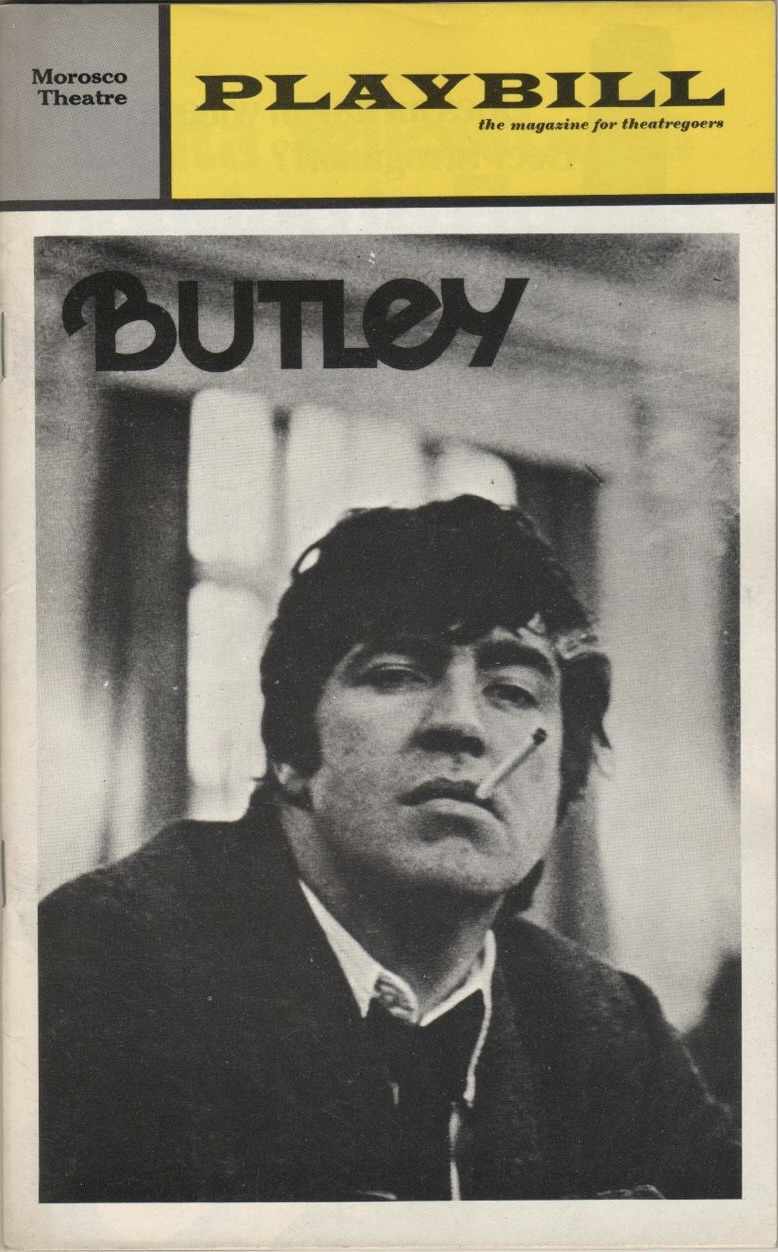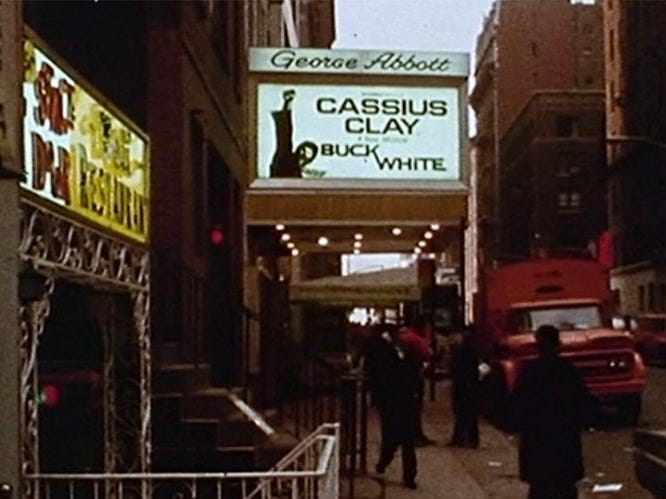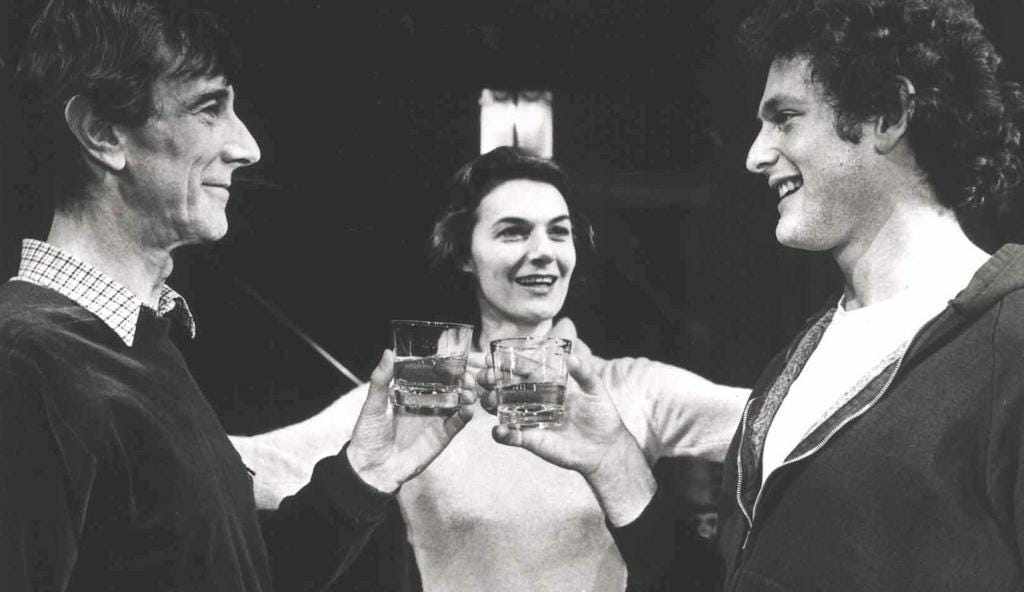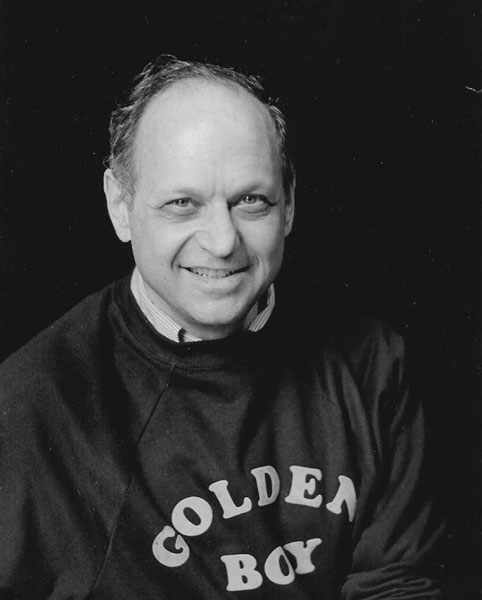
August 22nd marks the birthday of the actress Diana Sands, who died in 1973 at the far-too-young age of thirty-nine. A fine dramatic actress of both contemporary plays and the classics, she was an original cast member of Lorraine Hansberry’s A Raisin in the Sun, a play that former New York Times theatre critic Frank Rich once noted “changed American theater forever.” Here's a celebration of this pioneer, in today's "Theatre Yesterday and Today."
As part of a group of African American actors and actresses that burst through in the 1950s and early ’60s, Diana Sands worked alongside James Earl Jones, Cicely Tyson, Ossie Davis, Ruby Dee, Roscoe Lee Browne and Louis Gossett, all of whom broke new ground on and off Broadway. But with her career cut down at its height, and with the bulk of her short but vibrant work relegated to the theatre, we are left with a smattering of film and television performances that give only partial clues to her talents. Like most actors of her ilk, unless you saw someone like Diana Sands on stage, you only saw part of what made her so special.

Sands was the first black actress to be cast in a major Broadway play without regard to color. This was due to Philip Rose, the lead producer and the person responsible for bringing A Raisin in the Sun to Broadway in 1959. Rose, a white man, spent more than a year finding the backing for what would become the first Broadway play written by a black woman and directed by a black man. The play was a sensation, and after Sands went on to prove herself with highly regarded performances in a variety of plays and television appearances, Rose thought she was the right actress for a new comedy he was producing. Defying convention, Rose wanted Sands to play opposite Alan Alda in The Owl and the Pussycat, a two-hander by Bill Manhoff.
Casting Sands without regard to the color of her skin was a very big deal in 1964. With the character’s race never mentioned in the play, it forced audiences to accept that the potential romance between the two character’s hinging on either of their races had no bearing on the story. Its success was a testament to the daring of the casting, as well as to the artistry of Sands and Alda, whose chemistry together onstage overrode what was actually a rather thin play. It ran for more than a year and provided Sands with a Tony nomination for Best Actress.
When Howard Taubman reviewed The Owl and the Pussycat for the New York Times, he took until his final paragraph to address the elephant in the room. “Since much was made of this point in advance, it should be noted for the record that Miss Sands, a Negro, plays a role that has no intimation of color. The only question to answer is How does she fill the role and aid the play’s values, such as they are? Admirably.”

Sands first made her professional stage debut Off-Broadway in George Bernard Shaw’s Major Barbara while still a student at New York City’s High School of Performing Arts in Manhattan. Post graduation, in her early days of pounding the pavement, Sands found work as a dancer while auditioning in the hopes of landing a play. One of her first jobs was The Premise, which landed her an Obie Award, celebrating achievement in the Off-Broadway and off-off Broadway theater. Then came A Raisin in the Sun when she was just twenty-four, where it was immediately apparent that this was an actress with a bold, yet delicate touch. In the 1960 film version, where Sands is reunited with all the major players from the original Broadway cast, the strength of her performance all but leaps off the screen. As the feisty and intellectually curious sister of Sidney Poitier’s Walter, she is in open defiance of the members of her family, fiercely claiming a belief in her own abilities to get out of the ghetto on her own. With a captivating voice and a litheness of movement, she is a force to be reckoned with.
Four years after her debut in A Raisin in the Sun, her musical talents were briefly on display (very briefly), in an Off-Broadway revue titled Another Evening with Harry Stoones. This tongue-in-cheek pastiche of songs supposedly composed by Stoones (who was entirely fictional) closed in one night. Its place in history is secured though, due to serving as the debut of Barbra Streisand, then just nineteen-years-old. As fate would have it, once fully launched into film stardom after Funny Girl, it was Streisand who won the role created by Sands when The Owl and the Pussycat was made into a film in 1970. That’s show biz.
Such frustration was common not only to Sands, but to her fellow African-American actors as well, who found that very few plays like A Raisin in the Sun were out there to afford them the opportunities to show off their talents. Sands corrected this for herself by going abroad and finding work doing classical theatre, playing in Shakespeare’s Anthony and Cleopatra and Shaw’s Caesar and Cleopatra, both of which she would eventually get to perform in Atlanta and Los Angeles. She also helped found the Third World Cinema, along with Ossie Davis, Brock Peters, and other black actors, writers and directors. Their idea was to develop projects and to train black performers in all aspects of film production, which made it possible for Sands to star in 1972’s Georgia, Georgia, written by Maya Angelou.

Other notable stage roles were her Tony nominated performance in James Baldwin’s Blues for Mister Charlie, as well as her being chosen to lead the Lincoln Center Theatre Company in Shaw’s Saint Joan, where she again broke racial barriers by playing a role traditionally played by white actresses. A year after that, Sands was once again cast with no regard to skin color when she played opposite Jason Robards in Joseph Heller’s We Bombed in New Haven. Though it might feel like this is the pounding of a dead horse, it’s only very recently (and this is 2020, folks) that people of color are finally being cast in a color blind way. Sands was at the forefront of the movement, and for this alone should not be forgotten.
Sands was set to star opposite James Earl Jones in the 1973 film Claudine, but was forced to bow out when her cancer was diagnosed. She insisted that her friend Diahann Carroll play it, for which she was nominated for the Academy Award for Best Actress. Had she lived, would this have been Sands’s breakthrough film role? Might she even have been so good in the part that she might have won the Oscar herself? And would it have mattered? Halle Berry became the first black Best Actress winner in 2003 and it yielded very little in the way of prominent or important work for her thereafter. As the poem by Robert Frost goes: “The woods are lovely, dark and deep. But I have promises to keep, and miles to go before I sleep.”

To the promises Diana Sands helped offer all who came after her, may the work continue.
If you enjoy these columns, check out Up in the Cheap Seats: A Historical Memoir of Broadway, available at Amazon.com in hardcover, softcover and e-book. Also sign up to follow me here, and feel free to email me with comments or questions at Ron@ronfassler.org.





















Write a comment ...